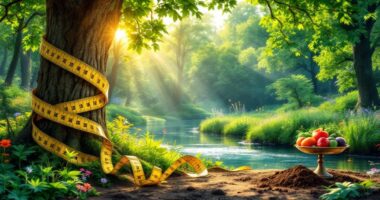Pollinator conservation focuses on protecting bees, butterflies, and other species that support 85% of flowering plants and 75% of global crops. These tiny workers contribute $15 billion annually to U.S. agriculture alone. They face mounting threats from habitat loss, pesticides, and climate change. Simple actions like planting native flowers, avoiding chemicals, and participating in citizen science can make a significant difference. The future of our food security depends on these small but mighty creatures.

Bees, butterflies, and their buzzing brethren are facing a silent crisis that threatens not just their survival, but our own food security. These tiny titans of agriculture shoulder an enormous responsibility, facilitating reproduction for a whopping 85% of flowering plants and 75% of crops worldwide. In financial terms, they provide over $15 billion annually in agricultural services across the U.S. alone—not bad for creatures most people swat away without a second thought.
The threats facing these invaluable species read like a villain’s handbook: habitat destruction carves up their territory, while pesticides (particularly those sneaky neonicotinoids) turn their dinner into a deadly last meal. Climate change is playing matchmaker gone wrong, disrupting the delicate timing between when flowers bloom and pollinators emerge. It’s like showing up for a blind date, only to discover your potential partner came and left three weeks ago.
With over 20,000 bee species globally—3,600 native to American soil—plus countless butterflies, moths, beetles, and even some bats and birds in the mix, the pollinator workforce is diverse but increasingly endangered. The Empire State Native Pollinator Survey delivered sobering news: 38% of New York’s pollinators are at risk, a trend reflecting broader national concerns.
Conservation efforts are blooming across the country. Organizations like the Xerces Society and government initiatives such as the USDA’s pollinator programs are creating buzz around protection strategies. A comprehensive 24-month project launched in February 2022 aims to enhance pollinator conservation across North America through best practices sharing and evidence-based action plans. The Million Pollinator Garden Challenge encourages citizens to transform their yards from green deserts into pollinator paradises. The EPA’s implementation of Managed Pollinator Protection Plans provides vital frameworks for stakeholders to collaborate in reducing pesticide risks to bees through regionally tailored approaches.
Individuals can join this movement by planting native flowers (forget perfect lawns—they’re ecological wastelands), creating nesting sites, and treating pesticides like that questionable leftover food in your fridge: best avoided entirely. Citizen science projects offer opportunities for everyday people to contribute to research efforts.
Our relationship with pollinators represents one of nature’s most beautiful partnerships—they deliver our food, and in return, they ask only for safe places to live and toxic-free dining options. It seems a small price to pay for keeping our plates full and ecosystems thriving.
Frequently Asked Questions
Can I Create a Pollinator Garden in a Small Urban Space?
Yes, small urban spaces can absolutely support pollinator gardens. Container gardens on balconies, window boxes, rooftop spaces, and vertical gardens all provide viable options for urban pollinator havens. Even a single planter makes a difference.
Residents can maximize impact by selecting native plants with varying bloom times, incorporating herbs like basil and thyme, providing water sources with pebbles, and creating nesting sites. These mini-ecosystems allow city dwellers to contribute meaningfully to pollinator conservation while enjoying nature’s beauty up close.
What Pesticides Are Safe for Pollinators?
Few pesticides are truly “safe” for pollinators, but some have lower impacts. Insecticidal soaps, Bacillus thuringiensis (Bt), neem oil, spinosad, and acequinocyl are better choices when used properly.
Application timing matters—spray in evenings when bees aren’t active and never on blooming plants. Granular formulations generally pose fewer risks than sprays.
The best approach follows Integrated Pest and Pollinator Management principles: prevention first, pesticides last, and only when absolutely necessary.
How Do Climate Changes Impact Pollinator Populations?
Climate change delivers a one-two punch to pollinators. Rising temperatures disrupt the delicate timing between blooming plants and hungry pollinators, while extreme heat events drive local bumblebee extinctions. Increased rainfall dilutes nectar quality, and droughts shrink flowers and reduce pollen production.
Weather extremes destroy nests, while habitat fragmentation blocks migration routes. Even nectar quality suffers as warmer temperatures decrease sugar content. This climate chaos also weakens pollinator immune systems, leaving them vulnerable to disease.
Are Non-Native Flowering Plants Harmful to Local Pollinators?
Non-native flowering plants present a nuanced relationship with local pollinators. Research shows they can provide valuable resources, especially in urban environments where 106 bee species were found visiting both native and non-native plants.
However, they may disrupt established plant-pollinator networks and favor generalist over specialist species. The ideal approach appears to be a thoughtful mix of native and non-invasive exotic plants, which can extend flowering periods and enhance habitat diversity for pollinators.
Can Beekeeping Help Restore Declining Wild Pollinator Populations?
Beekeeping yields mixed results for wild pollinator restoration. While it increases overall pollinator awareness and can encourage habitat creation, research shows managed honey bees often compete with native species for limited resources.
At high densities, honey bee hives may actually decrease wild bee diversity. True wild pollinator conservation requires more thorough approaches: preserving native habitats, reducing pesticide use, planting diverse native flowers, and implementing sustainable farming practices that benefit the entire pollinator community, not just honey bees.









